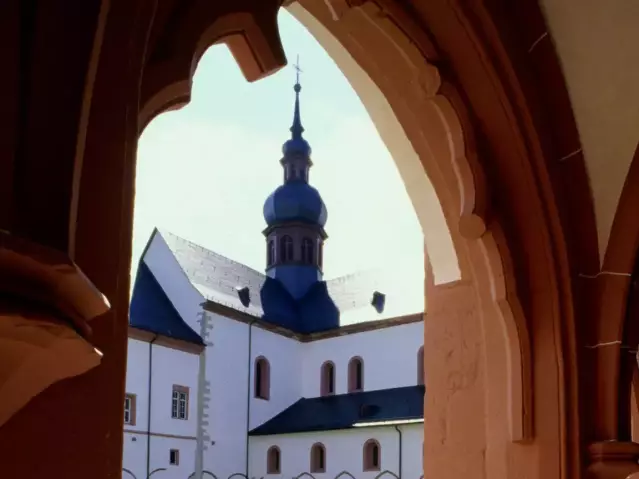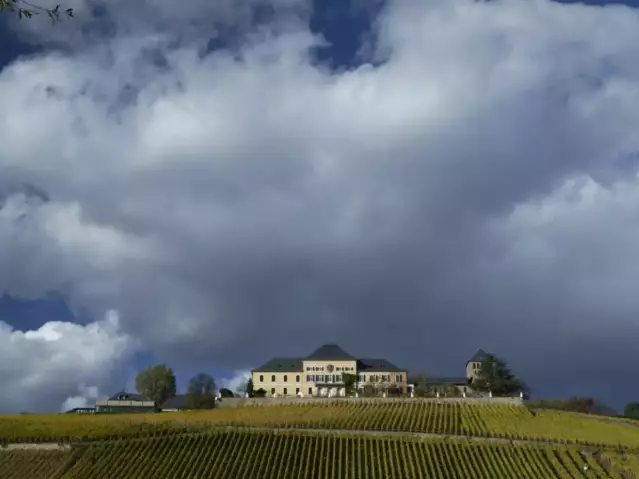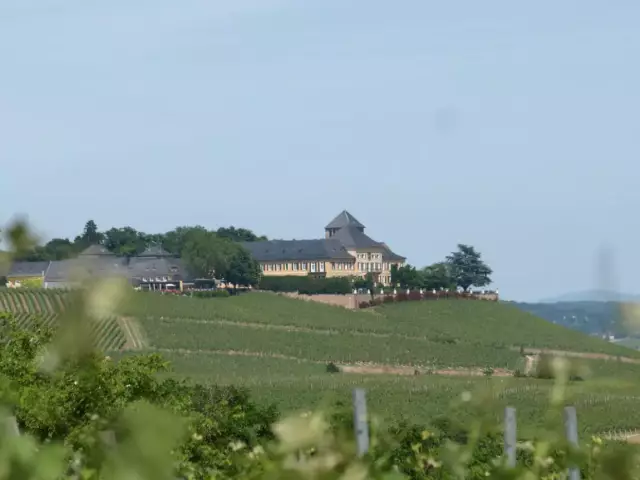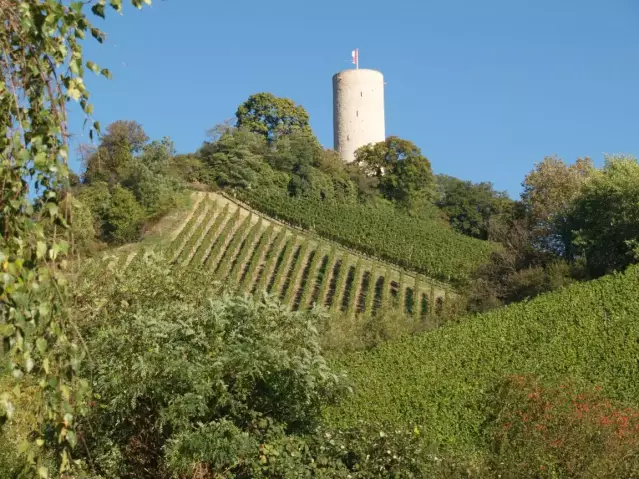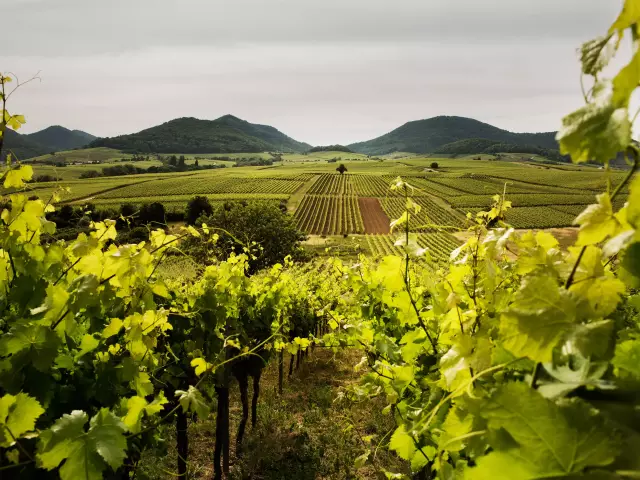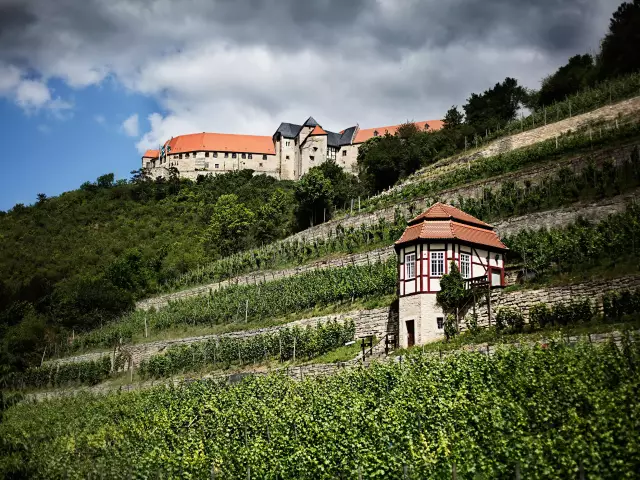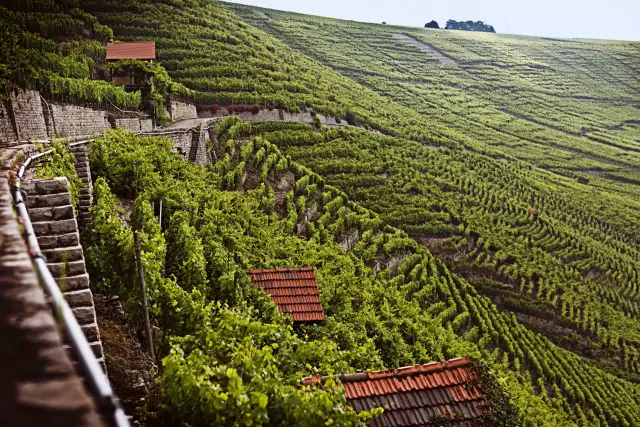Rheingau

The Rheingau wine-growing region is located in the state of Hessen and is one of the most renowned wine regions in Germany. The vineyards cover a total of 3,180 hectares (as of 2024). They start at Frankfurt/Main and run for about 50 kilometres over Wiesbaden along the right bank of the Rhine to Lorch, north of Rüdesheim.
Facts
-
3.180 ha
Vineyard area (2024)
-
129
single vineyards
-
2.460 ha
Riesling cultivation
A geographical peculiarity of the Rheingau is the so-called Rhine Knee: While the Rhine normally flows in a northerly direction, it turns almost at right angles to the west near Wiesbaden – due to the Rheingau Mountains. This bend in the river ensures a particularly favourable microclimate in the region. After about 30 kilometres, near Rüdesheim am Rhein, the course of the river then turns north again.
Famous for its Riesling
The Rheingau is above all the home of Riesling, which grows on 2,412 hectares of vineyards, and that of Pinot Noir with about 400 hectares, for which Assmannshausen is particularly famous. The Rheingau has the highest percentage of Riesling in Germany. The grape variety thrives particularly well on the dry, stony south-facing slopes. It also survives cold winter days and uses the long ripening period to develop fine fruit acids and aromas.
Impressive history, striking viewpoints
The Rheingau is a very popular tourist region, where old monasteries and castles are magnificently embedded in the wine landscape. The Rheingau Riesling Road leads over 120 kilometres through picturesque wine villages. On the way, wine taverns and wine taverns invite you to take a break for a glass of Rheingau wine and cultural-historical sights inspire along the way. If you visit the striking view points of the Rheingau such as the Niederwald Monument, Johannisberg Castle, the Hallgartener Zange, Oestrich-Winkel or the Bubenhäuser Höhe, you will see the historic centres of viticulture in front of you.
First of all there is the former Cistercian abbey, Kloster Eberbach, one of the best preserved medieval monastery complexes in Germany. Johannisberg is not only known for the castle of the same name, which arose from the ruins of a monastery complex, but also historically as the place where Spätlese (late harvest) wines originated. Also notable is the world-renowned oenological research and teaching institutes in Geisenheim which has contributed significantly to the extraordinarily high level of technical competence in the German and global wine industry today. Founded in 1872, it focuses on viticulture, fruit growing and horticulture as well as grape breeding, wine making and international wine business.
Rheingau wineries and restaurateurs offer high-quality wine culinary experiences all year round: the Gourmet and Wine festival in March, the ‘Schlemmerwochen’ (gourmet weeks) at the end of April, the Rheingau Music Festival over the summer months and the Glorious Rheingautage in November. The traditional wine auctions at Kloster Eberbach also offer a unique experience in stunning historical surroundings.
Overview Rheingau
Geographical location: The Rhine Valley, along the 50° of latitude. The region is practically one long hillside on the northern bank of the river on its 30-km (20-mile) east-west journey from Wicker and Hochheim (near the confluence of the Main and Rhine rivers) to the river's bend at Rüdesheim and beyond, to the border with the Mittelrhein at Lorchhausen.
Major town(s): Wiesbaden, Rüdesheim, Geisenheim, Eltville
Climate: Mild winters and warm summers; the vineyards are protected from cold winds by the forest-capped Taunus Hills and benefit from the heat-reflecting surface of the Rhine
Soil types: Although the wine-growing are is small, there are many kinds of soil, including chalk, sand, gravel, all types of clay, loess, quartzite and slate.
Vineyard area 2024 3,180 ha
Grape varieties 2024 [white 85%, red 15%]: Riesling (76%), Spätburgunder (13%) and small amounts of other white varieties
Marketing: Compared with other German wine regions, the Rheingau has a high proportion of full-time wine-growers; sales of bottled, rather than bulk, wine predominate, and much of the region's wine is sold directly to end-consumers. The region enjoys a broad domestic and international popularity.
Signposted routes through wine country: Rheingauer Riesling Route (driving) · Rheingauer Riesling Pfad (hiking) · Rheingauer Radwanderweg (cycling)
Varietals

Quotes
Highlights of wine culture in Rheingau
-
Highlight The Wine Crane of Oestrich The Wine Crane of Oestrich: Where the Wine of Rheingau began its Journey
Learn more
Winesights
Wine hike Rheinsteig
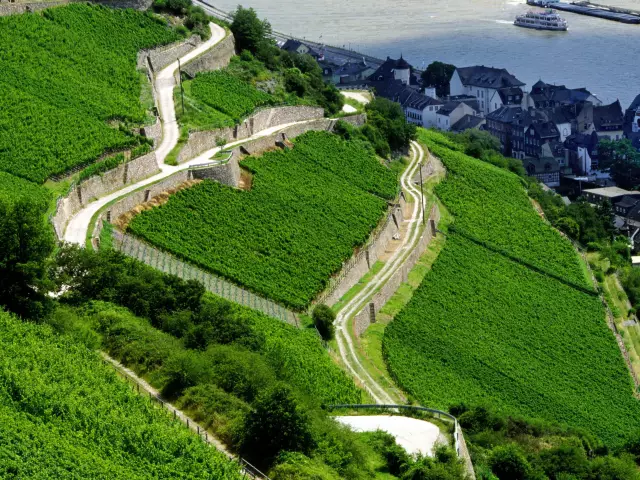
Contact
-
Rheingauer Weinwerbung GmbH
65375 Oestrich-Winkel-Winkel Rheinweg 30 Hessen Germany


